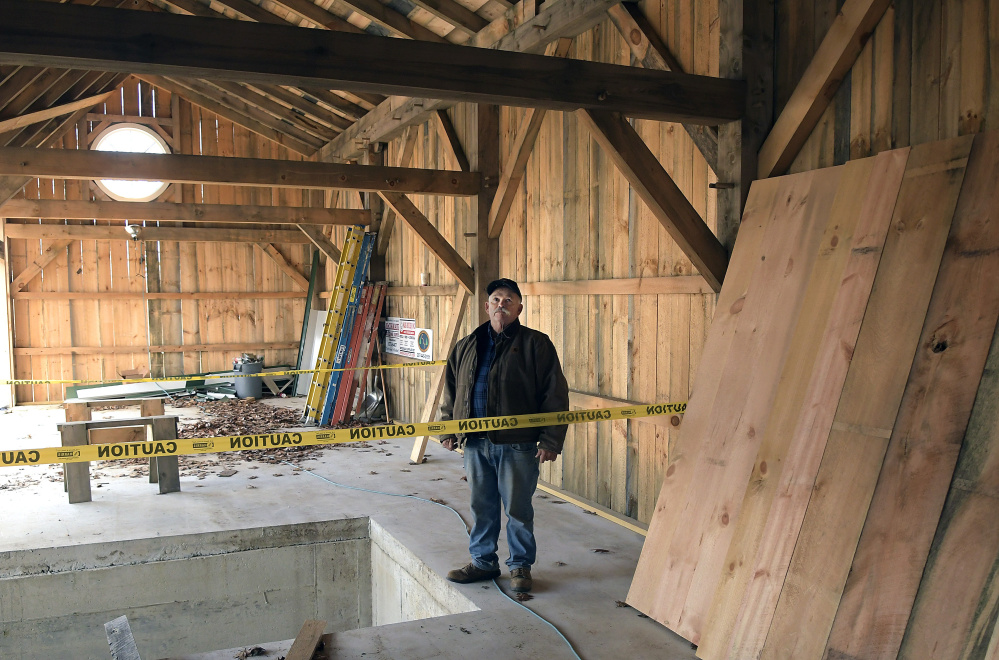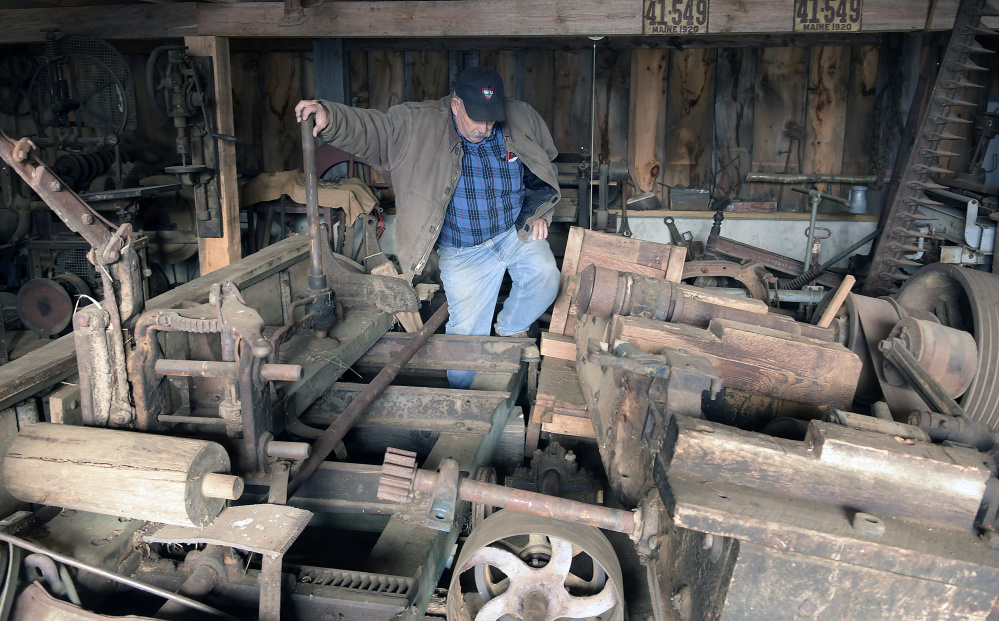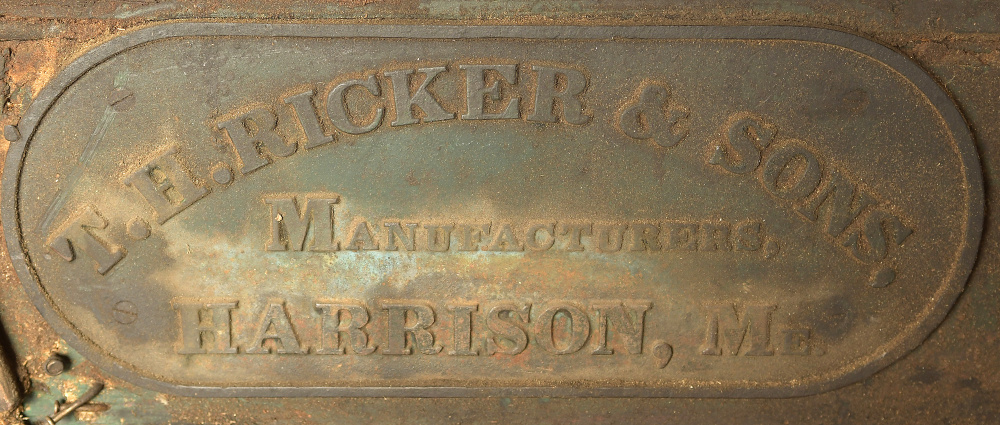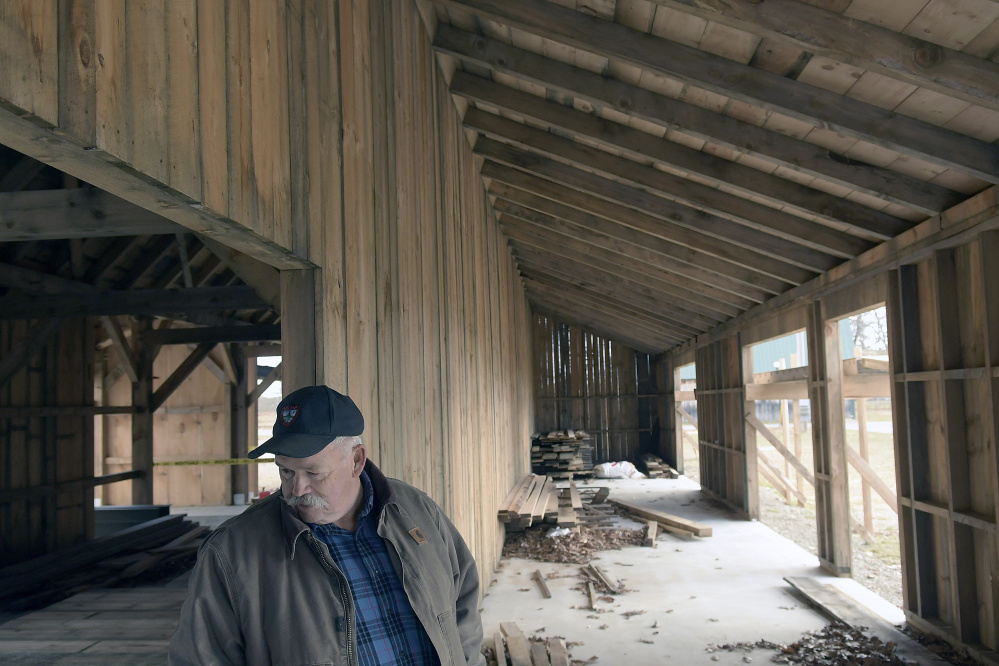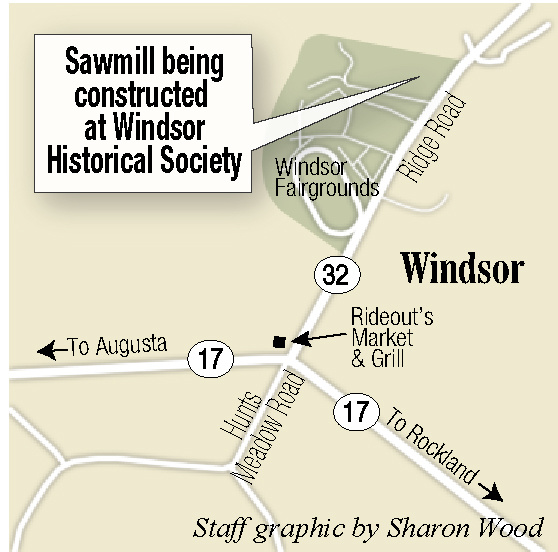WINDSOR — One donated piece of lumber at a time, volunteers this summer put together the Windsor Historical Society’s new post-and-beam sawmill building — the jigsaw puzzle of Bob Brann’s dreams.
Now they’ve got another puzzle to put together: the late 19th-century working sawmill.
Donated by an Albion man and disassembled for the move to Windsor, the sawmill will occupy the 96-by-24-foot building, which is the latest addition to the historical society’s prominent spot on the Windsor Fairgrounds.
Brann and others involved helped take the old sawmill apart, but putting it back together, he concedes, “could be quite a jigsaw puzzle.”
There were times during the construction of the new building where Brann, who has some 50-years of carpentry experience, worried the roughly 250 pieces of lumber wouldn’t fit together. They did, and workers recently put a roof on the building, leaving only doors and some partitions remaining to be built.
Brann hopes to add more features to the sawmill, to show fairgoers and other visitors more about how mills like this one were used to create lumber to build homes across the state and nation.
“I’ve had this dream, the last 10 or 15 years, to build a sawmill here,” Brann, president of the Windsor Historical Society, said at the society’s spot just inside one of the gates at the Windsor Fairgrounds, a patch of ground that a young Brann helped his dad clear many years ago. “During the fair we’ll have demonstrations, saw a log or two. I wanted a working mill. My idea of a museum is something that moves, not something that just sits there and you look at it.”
The Ricker sawmill, which was made in Harrison, Maine, was donated for the Windsor Historical Society’s museum complex at the fairgrounds by Jimmy Hawkes, of Albion, who purchased it in the 1990s and used it to cut lumber to build a home. Before he acquired it, it had been in steady use as a sawmill, also in Albion, up into the 1970s, Brann said.
The mill was water-powered, but since the fairground doesn’t have a brook running through it, it will be powered by a diesel engine, donated by Caddy White of Sidney.
Brann is confident they’ll be able to get the old mill back together — and working — again. He said there are still people around with the old, but not lost, skills to work on it. And, he was happy to say, some have already offered their help.
He said a core group of volunteers built the wooden post-and-beam home for the sawmill this summer, some putting in hundreds of hours of work. Brann said “every stick of lumber” used to build it was donated by area business owners, including Jason Tyler and Bob Doyle. Most volunteers worked weekends on the project, while retired volunteers also worked on it during the week. Also, a local couple, Linda and Ron Cyr, cooked hearty lunches for the volunteers.
At one point as many as a dozen volunteers were working on the building at once, though normally it was about half that many people.
“It’s amazing how much support we’ve had,” Brann said of the volunteers and donors.
Brann said he was so busy working on it he only mowed his lawn once this summer. He also had a heart attack in June which he said “slowed me down a little.”
Brann estimated the total cost of the building is around $20,000. He said building such a structure without volunteers or donated materials would likely cost at least $120,000.
The Windsor Fair provided $15,000 toward the construction of the building.
Tom Foster, president of the Windsor Fair Association, and Brann both said the historical society has been a good fit with the fairgrounds. The society also has a blacksmith shop, barn, museum, cider mill, smokehouse, carriage shop, two houses, a cooper shop and, from Somerville, a one-room schoolhouse on the fairgrounds.
“We’re lucky to have 120,000 people a year on our doorstep,” Brann, who is also a trustee of the fair, said of the historical society hosting fairgoers each year. “It has been a great marriage. And we’re big enough now (in the historical society) so we’re a good draw for the fair.”
But it’s a marriage that almost didn’t happen.
Brann said after the Windsor Historical Society was formed as part of the town’s sesquicentennial in 1972, organizers sought to build a museum on the fairgrounds. The proposal was approved by the fair’s trustees, by a one vote margin.
Foster, fair president for some 25 years, said the historical society has proven to be “a wonderful addition” to the fair, providing historical items and demonstrations most other fairs don’t have.
“We feel very fortunate to have the historical society there, they are definitely a huge asset and we get a lot of good comments about what they do,” Foster said. “And one of the reasons we get that many people is because of them.”
The sawmill is expected to be installed in the building in time for next year’s Windsor Fair.
Keith Edwards — 621-5647
Send questions/comments to the editors.


